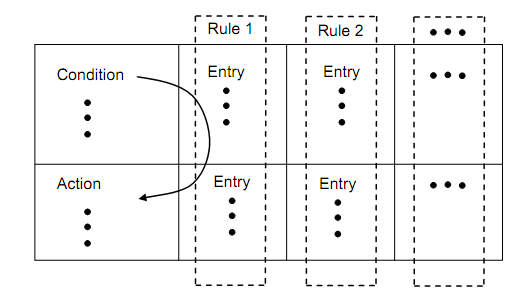Decision Tables
Decision tables provide a convenient way to document manufacturing knowledge. They are the principal elements of all decision table based process planning systems. The elements of a decision table are conditions, actions, and rules. They are organized in the form of an allocation matrix as shown in Figure 4, where the conditions state the goal we want to achieve and the actions state the operations we have to perform. The rules, formed by entry values according to the experience of experts, establish the relationship between conditions and actions.

Figure 4: Format of a Decision Table
Entries can be either Boolean-type values (true, false, and do not care) or continuous values. See Tables 1 and 2. The decision-making mechanism works as follows: for a particular set of condition entries, look for its corresponding rule, and from that rule determine the actions. For example, if the condition is to drill a hole, then from the rules we look for the rule that can be applied, and from that rule we get the solution (or action).
Table 2 : Continuous Value-Type Entries
